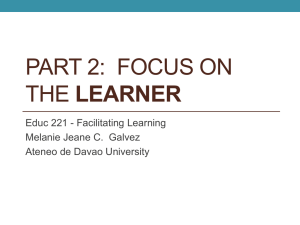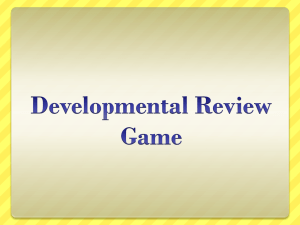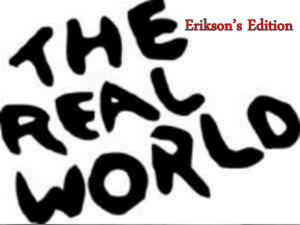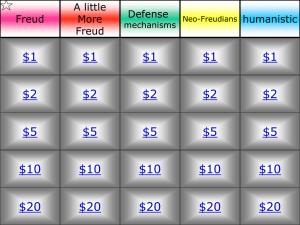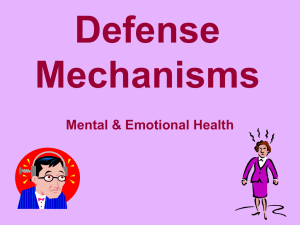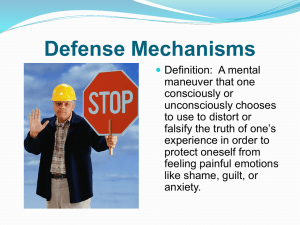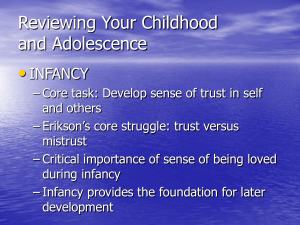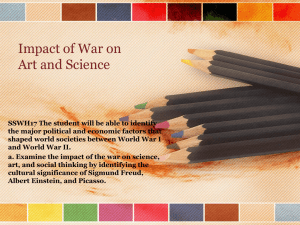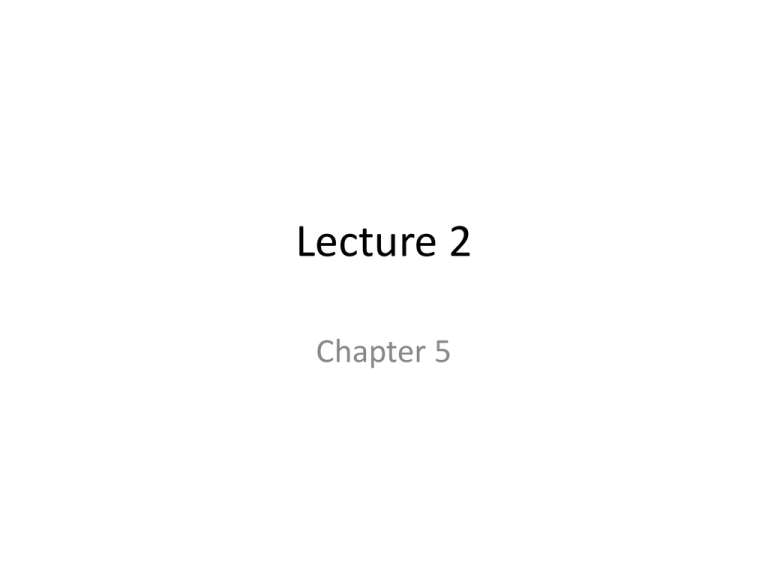
Lecture 2
Chapter 5
Who developed the psychosocial
theory with a the first stage as Trust vs.
mistrust?
A.
B.
C.
D.
E.
Sigmund Freud
Erik Erikson
Jean Piaget
Lawrence Kohlberg
Abraham Maslow
Who developed the Theory of Moral
Development
A.
B.
C.
D.
E.
Sigmund Freud
Erik Erikson
Jean Piaget
Lawrence Kohlberg
Abraham Maslow
Who developed the psychoanalytical
theory and coined the 3 functional
components of the mind as Id, Ego &
Superego?
A.
B.
C.
D.
E.
Sigmund Freud
Erik Erikson
Jean Piaget
Lawrence Kohlberg
Abraham Maslow
Who developed the cognitive theory about
how children learn and coining the terms
Schema, assimilation & accommodation?
A.
B.
C.
D.
E.
Sigmund Freud
Erik Erikson
Jean Piaget
Lawrence Kohlberg
Abraham Maslow
Theories of Growth & Development
• What is Growth?
– Increase in physical size
– Qualitative
– Objective
Theories of Growth & Development
• What is Development?
– Progressive acquisition
of skills
– Qualitative
– Subjective
• What is maturation?
– Attainment of full
development of a skill
Directional Terms
Cephalocaudal
• G&D Progresses from:
– Head (Cephalo)
– Tail (Caudal)
Proximodistal
• G&D progresses from:
– Center (proximal)
– Extremities (distal)
Genetics vs. Environment
• Why did my boys play with balls and cars and
not dolls and flowers?
A. Because they were born that way
B. Because the environment in which they lived
influenced them to like balls more than dolls.
Genetics vs. Environment
• 2 major influences on
G&D
• Hereditary
characteristics
– Genes
• Environmental
– All others
G&D characteristics
1.
2.
3.
4.
5.
Simple complex
Continuous
Individualized
All systems
Holistic process
Uniqueness
• Personality
– Behavior patterns that
distinguish one person
from another
Understanding Theories
•
•
•
•
Stages
Progressive
Ladder effect
Regress
Psychoanalytical Theory
• Father:
– Sigmund Freud
• 3 part theory
1. Levels of awareness
2. Components of the
personality/mind
3. Psychosexual stages
Freud’s levels of awareness
• Conscious
• Sub-conscious
• Unconscious
• Became the basis of
Freud’s theory of
psychoanalysis
Level of awareness: Conscious
• Experiences with in
immediate awareness
• Reality
• logic
Level of awareness: Subconscious
• AKA: Preconscious
• Stores memories,
thoughts, feelings that
can be recalled with
little effort
Level of awareness: Unconscious
• Part of the mind
“closed” to awareness
• Memories that are
painful
Psychoanalytical Theory
• Father:
– Sigmund Freud
• 3 part theory
1. Levels of awareness
2. Components of the
personality/mind
3. Psychosexual stages
3 Components of the mind
• Id
• Ego
• Superego
Component of the Mind: Id
• Body’s basic primitive
urges
• Pleasure
• Libido (sex drive)
• Demands immediate
satisfaction
– “I want it NOW!”
Component of the Mind: SuperEgo
• Judges, controls,
punishes
• Dictates right from
wrong
• Conscience
• “You can’t have it.”
Component of the Mind: Ego
• Executive of the mind
• Compromise
• “Well, maybe later”
Psychoanalytical Theory
• Father:
– Sigmund Freud
• 3 part theory
1. Levels of awareness
2. Components of the
personality/mind
3. Psychosexual stages
Defense Mechanisms
•
•
•
•
AKA: mental mechanisms
Techniques used to “cope”
Sigmund Freud
Short term use /
“Adaptive”
– OK
• Over use / “Maladaptive”
• To protect one’s EGO
Defense Mechanism:
Suppression
• Conscious
• Putting it out of your
awareness
Defense Mechanism:
Rationalization
• Most widely used
• Justify or excuse
undesirable action or
feelings
Defense Mechanism:
Identification
• Take on the personality
traits of another
• http://www.youtube.co
m/watch?feature=playe
r_detailpage&v=v0iIEgub-o
Defense Mechanism:
Sublimation
• Rechanneling/ redirect
unacceptable impulses
into acceptable outlets
Defense Mechanism:
Regression
• Conflict return to an
earlier more
developmentally secure
stage
Defense Mechanism:
Denial
• Unable to recognize the
event or emotions
•
http://www.youtube.com/watch?feature=
player_detailpage&v=wwGVDmEsi8A
Defense Mechanism:
Displacement
• Transfer emotions from
person to object
Defense Mechanism:
Projection
• Blaming mechanism
• Rejects unacceptable
thoughts or feelings and
attribute them to
another person
Defense Mechanism:
Compensation
• Make up for
deficiencies in one area
by excelling in another
are
Defense Mechanism:
Undoing
• Attempt to make-up for
something
unacceptable
Defense Mechanism:
Reaction formation
• Overcompensation
• Unacceptable feelings
or thoughts are
replaced with opposite
feelings or thoughts
Defense Mechanism:
Conversion
• Unconscious anxiety
converts into physical
symptoms (no organic
basis)
Which defense mechanism is it?
• You are arrested for drunk
driving several times but
don't believe you have a
problem with alcohol.
•
•
•
•
•
•
•
•
•
•
•
•
Suppression
Rationalization
Identification
Sublimation
Regression
Denial
Displacement
Projection
Compensation
Undoing
Reaction-formation
Conversion
Which defense mechanism is it?
• You and your roommate
have get into an argument
so you stomp off into
another room and pout
•
•
•
•
•
•
•
•
•
•
•
•
Suppression
Rationalization
Identification
Sublimation
Regression
Denial
Displacement
Projection
Compensation
Undoing
Reaction-formation
Conversion
Which defense mechanism is it?
• You get really mad at your
husband but scream that
he's the one mad at you.
•
•
•
•
•
•
•
•
•
•
•
•
Suppression
Rationalization
Identification
Sublimation
Regression
Denial
Displacement
Projection
Compensation
Undoing
Reaction-formation
Conversion
Which defense mechanism is it?
• When you get mad at your
sister, you break your
drinking glass by throwing it
against the wall.
•
•
•
•
•
•
•
•
•
•
•
•
Suppression
Rationalization
Identification
Sublimation
Regression
Denial
Displacement
Projection
Compensation
Undoing
Reaction-formation
Conversion
Which defense mechanism is it?
• When you say you're not
angry when you really are.
•
•
•
•
•
•
•
•
•
•
•
•
Suppression
Rationalization
Identification
Sublimation
Regression
Denial
Displacement
Projection
Compensation
Undoing
Reaction-formation
Conversion
Which defense mechanism is it?
• I always study hard for tests
and I know a lot of people
who cheat so it's not a big
deal I cheated this time
•
•
•
•
•
•
•
•
•
•
•
•
Suppression
Rationalization
Identification
Sublimation
Regression
Denial
Displacement
Projection
Compensation
Undoing
Reaction-formation
Conversion
Which defense mechanism is it?
• Intense rage redirected in
the form of participation in
sports such as boxing or
football
•
•
•
•
•
•
•
•
•
•
•
•
Suppression
Rationalization
Identification
Sublimation
Regression
Denial
Displacement
Projection
Compensation
Undoing
Reaction-formation
Conversion
Which defense mechanism is it?
• You have feelings of dislike
for someone so you buy
them a gift
•
•
•
•
•
•
•
•
•
•
•
•
Suppression
Rationalization
Identification
Sublimation
Regression
Denial
Displacement
Projection
Compensation
Undoing
Reaction-formation
Conversion
Psychoanalytical Theory
• Father:
– Sigmund Freud
• 3 part theory
1. Levels of awareness
2. Components of the
personality/mind
3. Psychosexual stages
Freud’s 5 Stages of
Psychosexual Development
1.
2.
3.
4.
5.
Oral
Anal
Phallic
Latency
Genital
• Conflict
• Resolve
• Next stage
Oral Stage
• Birth – 18 months
• Mouth erogenous area
• Oral gratification
Anal Stage
• 18 months – 3 years
• Learning independence
and control
• Focus on excretory
functions
Phallic Stage
• 3 – 6 years
• ID with parent of the
same gender
• Develop sexual identity
• Focus on genitals
• Oedipus complex
– Boys unconscious sexual
attraction to his mother
– Tries to get rid of father
• Electra complex
– Girl is attracted to her
father
– Tries to get rid of mother
Latency stage
• 6-12 years
• Sexuality is repressed
• Focus on relationships
with same sex peers
Genital Stage
• 13-20 years
• Libido reawakened
– Puberty
• Focus on relationships
with member of the
opposite sex
Psychoanalytical Theory
• Father:
– Sigmund Freud
• 3 part theory
1. Levels of awareness
2. Components of the
personality/mind
3. Psychosexual stages
Psychosocial Theory
• Erik Erikson
• 8 stages span lifespan
• Tasks have to be
accomplished
– h Independence
– h Self-esteem
Erikson’s Psychosocial Theory
Trust Vs. Mistrust
• Age
• Birth – 18 mo.
• Infancy
• Major developmental Task
– Develop trust with mothering
figure and generalize it to others
• Major Question:
– "Can I trust the people around
me?“
• Basic Virtue:
– Hope
• Important Event:
– Feeding
Erikson’s Psychosocial Theory
Autonomy Vs. Shame & Doubt
• Age
• 18 mo – 3 yrs
• Early Childhood
• Major developmental Task
– Gain some control &
independence within the
environment
• Major Question:
– "Can I do things myself or am I
reliant on the help of others?"
• Basic Virtue:
– Will
• Important Event:
– Toilet Training
Erikson’s Psychosocial Theory
Initiative Vs. Guilt
• Age
– 3-6 yrs
– Late childhood
• Major developmental Task
– Develop sense of purpose &
the ability to initiate and direct
own activities
• Major Question:
– “Am I good or bad?”
• Basic Virtue: Purpose
• Important Event:
– Exploration, Play
Erikson’s Psychosocial Theory
Industry Vs. Inferiority
• Age
– 6 – 12 yrs
– School age
• Major developmental Task
– Develop self-confidence by
learning, competing etc.
• Major Question:
– "How can I be good?“
• Basic Virtue:
– Competence
• Important Event:
– School
Erikson’s Psychosocial Theory
Identity Vs. Role Confusion
• Age
– 12 – 20 yrs
– Adolescence
• Major developmental Task
– Integrate tasks mastered &
secure sense of self
• Major Question:
– "Who am I?“
• Basic Virtue:
– Fidelity
• Important Event:
– Social Relationships
Erikson’s Psychosocial Theory
Intimacy Vs. Isolation
• Age
– 20 – 30
– Young adulthood
• Major developmental Task
– Form intense lasting
relationship
• Major Question:
– "Will I be loved or will I be
alone?“
• Basic Virtue:
– Love
• Important Event:
– Romantic Relationships
Erikson’s Psychosocial Theory
Generativity Vs. Stagnation
• Age
– 30 – 65 yrs
– Adulthood
• Major developmental Task
– Achieve life goals and also
considering the welfare of future
generations
• Major Question:
– "How can I contribute to the
world?“
• Basic Virtue:
– Care
• Important Event:
– Parenthood & Work
Erikson’s Psychosocial Theory
Ego Integrity Vs. Despair
• Age
– 65 yrs – death
– Old age
• Major developmental Task
– To review one’s life and derive
meaning
• Major Question:
– "Did I live a meaningful life?“
• Basic Virtue:
– Wisdom
• Important Event:
– Reflecting back on life
• Question: Jane, a preschooler, insists on
dressing herself each morning for school, even
though she generally selects mismatching
outfits, misses buttons, and wears her shoes
on the wrong feet. When her mother tries to
dress Jane or fix her outfit, Jane brushes her
mother off and insists on doing it herself.
What stage of psychosocial development best
describes Jane’s behavior?
• Question: At each stage of Erikson's
theory of psychosocial development,
people experience a(n) _________ that
serves as a turning point.
A. Epiphany
B. Conflict
C. Paradigm shift
D. Turmoil
• Question: The stage that occurs between
birth and one year of age is concerned
with:
A. Trust vs. Mistrust
B. Autonomy vs. Shame and Doubt
C. Initiative vs. Guilt
D. Identity vs. Role Confusion
• Question: Erikson believed that people move
through a series of _______ psychosocial
stages throughout the lifespan.
A. Four
B. Eight
C. Ten
D. Twelve
• Question: The crisis that arises in young
adulthood is concerned with:
A. Trust vs. Mistrust
B. Industry vs. Inferiority
C. Integrity vs. Despair
D. Intimacy vs. Isolation
• Question: According to Erikson, what is
the major conflict faced during
adolescence?
A. Autonomy vs. Shame and Doubt
B. Intimacy vs. Isolation
C. Identity vs. Role Confusion
D. Generativity vs. Stagnation
• Question: Eight-year old Steven has a difficult time
making friends at school. He has trouble completing
his schoolwork accurately and on time, and as a
result, receives little positive feedback from his
teacher and parents. According to Erikson’s theory,
failure at this stage of development results in
_____________?
A. Feelings of inferiority
B. A sense of guilt
C. A poor sense of self
D. Mistrust
• Question: The central conflict in the eighth stage
of Erikson’s theory focuses on integrity vs.
despair and involves reflecting back on your life.
Those who are unsuccessful at resolving this
conflict will look back with regret, anger, and
bitterness. Those who are successful will feel a
sense of satisfaction with the life they have lived.
According to Erikson, those who are successful in
this stage emerge with ______________.
A. Hope
B. Fidelity
C. Purpose
D. Wisdom
Cognitive Theory
• Jean Piaget
• Intellect & develop
thought processes
Cognitive theory
3 Major Concepts
• Schema
– Idea’s that grow from
experience
• Assimilation
– Ability to absorb new
information into
schemas
• Accommodation
– Schemas change with
new information
• A child seeing a zebra for the first time and calling
it a horse.
• The child assimilates this information into her
schema for a horse.
• When the child takes into consideration the
different properties of a zebra compared to a
horse, perhaps calling a zebra a horse with
stripes. When she eventually learns the name of
zebra, she has accommodated this information.
•
Piaget’s Stages of Cognitive Development
SENSORIMOTOR
• Age
– Birth – 2 yrs
• Major developmental Task
–
–
–
–
Mobility
Sense of self
Object permanence
Form mental images
Piaget’s Stages of Cognitive Development
Preoperational
• Age
– 2 – 6 yrs
• Major developmental Task
– Express self with language
– Understanding gestures
– Object permanence
Piaget’s Stages of Cognitive Development
Concrete operational
• Age
– 6 - 12 yrs
• Major developmental Task
–
–
–
–
–
Logical thinking
Reversibility & spatiality
Differentiate and classify
Socializing
Apply rules
Piaget’s Stages of Cognitive Development
Formal operational
• Age
– 12 – 16 yrs
• Major developmental Task
–
–
–
–
Abstract thinking
Testing hypotheses
Logical thinking
Cogitative maturity
• Piaget believed that children in the
preoperational stage have difficulty
taking the perspective of another person.
This is known as:
• a) Reversibility
• b) Egocentrism
• c) Metacognition
• d) Constructivism
• The ability to think abstractly and
systematically solve problems emerges
during the:
• a) Concrete Operational Stage
• b) Sensorimotor Stage
• c) Formal Operational Stage
• d) Preoperational Stage
• According to Piaget, children in the
concrete operational stage have
difficulty with:
• a) Perspective-taking
• b) Deductive logic
• c) Inductive logic
• d) Conservation
• Piaget's stages are criticized by some due to:
• a) His theory was based on an
unrepresentative sample of children.
• b) Not all people reach the formal operational
stage or use formal operational thought
consistently.
• c) His theory underestimates children's
abilities.
• d) All of the above.
• Jane's mother has two crackers, both of equal size.
She breaks one of the crackers up into four pieces.
Jane says she wants the one with the most and
immediately chooses the four pieces, even though
the two amounts are equal. Jane's choice illustrates
Piaget's concept of:
• a) Accommodation
• b) Egocentrism
• c) False belief
• d) Conservation
• A schema is a:
• a) Category of knowledge that allows us
to interpret and understand the world.
• b) Process of taking in new information.
• c) Process of balancing old knowledge
and new information.
• d) None of the above.
• Piaget assumed that children are
__________ in constructing
understanding of the world.
• a) Passive
• b) Active
• c) Neutral
• d) Bystanders
• Jane has learned to feed herself with a spoon.
When her mother gives her a fork, she
immediately begins to feed herself. Jane has
__________ the fork into her schema for
utensils.
• a) Accommodated
• b) Appropriated
• c) Assimilated
• d) Initiated
Human Needs Theory
Abraham Maslow
Physiological Needs
• O2
• Food
• Water
Safety Needs
• Feeling free from
danger and risk
• Secure in one’s own
environment
Belonging
• Feeling worthy of
affection and social
support
Self-Esteem
• Feeling competent
• Strong self-worth
Self-Actualization
• Meeting one’s full
potential
Theory of Moral Development
• Lawrence Kohlberg
• Develop moral
reasoning as you gain
ability to think logically
• 3 levels of moral
development
• 6 stages of acquired
moral reasoning
Kohlberg Dilemma
• In Europe, a woman was near death from a special kind of
cancer. There was one drug that the doctors thought might
save her. It was a form of radium that a druggist in the same
town had recently discovered. The drug was expensive to
make, but the druggist was charging ten times what the drug
cost him to make. He paid $200 for the radium and charged
$2,000 for a small dose of the drug. The sick woman's
husband, Heinz, went to everyone he knew to borrow the
money, but he could only get together about $1,000 which is
half of what it cost. He told the druggist that his wife was
dying and asked him to sell it cheaper or let him pay later. But
the druggist said: "No, I discovered the drug and I'm going to
make money from it." So Heinz got desperate and broke into
the man's store to steal the drug-for his wife. Should the
husband have done that?
Level: Preconventional
• Age 4-10 yrs
• Stage
1. Punishment &
obedience oriented
2. Instrumental relativist
oriented
• Behavior motivated by
fear of punishment
• Behavior motivated by
egocentrism and
concern for self
Level: Conventional
• Age: 10-13 yrs
• Stage
3. Interpersonal
concordance
orientation
4. Law and order
orientation
• Behavior motivated by
expectations of others,
strong desire for
approval & acceptance
• Behavior motivated by
respect for authority
Level: Postconventional
• Age: adolescence up
• Stages
5. Social contract legalistic
orientation
6. Universal ethical
principle orientation
• Behavior motivated by
respect for laws and
moral principles
• Behavior motivated by
internalized principles
of honor

